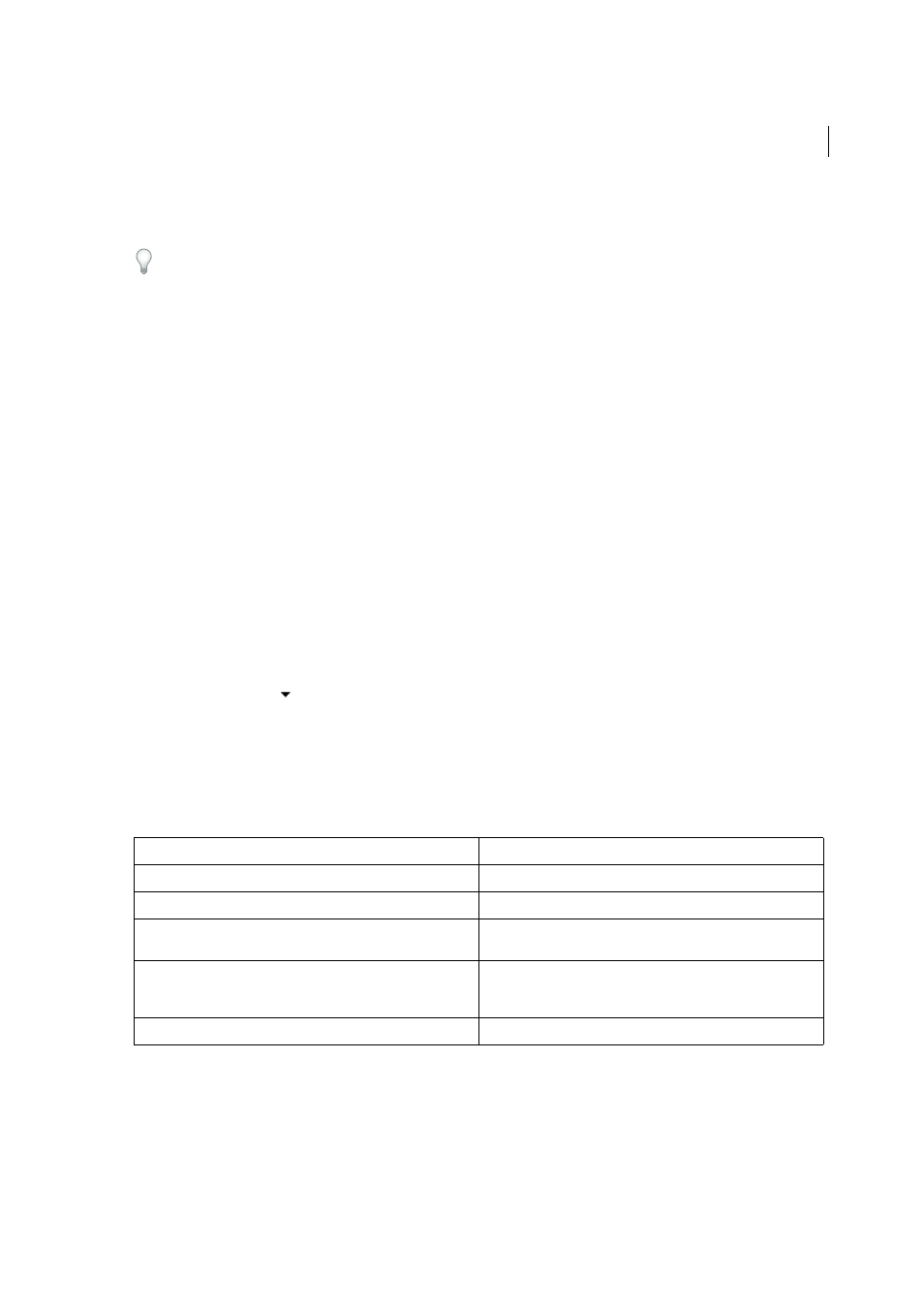Creating a table of contents, Change the page numbering style, Common page numbering tasks – Adobe InDesign CC 2015 User Manual
Page 114

109
Layout and design
Last updated 6/6/2015
5
Apply the master page to the document pages on which you want the page numbering to appear. To apply master
pages, see
.
To remove the page number from the first page in the document, you have two options. Either apply a different or the
None master, or override and delete the master text frame on the document page. Ctrl/Cmd+Shift-click a master text
frame to override it.
Change the page numbering style
By default, pages are numbered using Arabic numerals (1, 2, 3...); however, you can number pages using upper or
lowercase Roman (i, ii, iii...) or alphanumeric (a, b, c...) numbering. You can also number pages using preceding zeros.
Each part of the document that uses a different numbering style is called a section. For more information on sections,
In Japanese, Chinese, or Korean versions, by default, Arabic numerals are used for page numbers. However, if you use
the Numbering & Section Options command, you can specify the style of numbering, such as Roman numerals, Arabic
numerals, Kanji, and so on. The Style option allows you to select the number of digits in the page number, for example,
001 or 0001. Each part of the document that uses a different numbering style is called a section. For more information
on sections, see
Use the Numbering & Section Options dialog box to change the page numbering style to use a different format. You
can also use this dialog box to restart page numbering or to start page numbering at a number you specify.
1
In the Pages panel, select the page where you want the new numbering style section to begin.
2
Choose Layout > Numbering & Section Options.
3
Specify options, and then click OK. S
A section indicator icon appears above the page icon in the Pages panel, indicating the start of a new section.
Note: If a number or letter appears before the current page number you inserted, it means a section prefix is included. If
you don’t want this prefix, deselect Include Prefix When Numbering Pages in the Numbering & Section Options dialog box.
Common page numbering tasks
InDesign offers several different features that help you create page numbering effects.
Creating a table of contents
To do this:
Do this:
Add page numbering to documents in a book.
See
.
Add section numbers and chapter numbers.
See
.
Create running headers or running footers that use text variables such
as the create date, filename, or the current heading or title.
See
and
.
Create a “Page x of y” effect in which x is the current page and y is the
total number of pages.
Insert a Current Page Number marker for x, and insert the Last Page
Number text variable for y (choose Type > Text Variables > Insert
Variable > Last Page Number).
Create a “Continued on page x” story jump.
See
.
